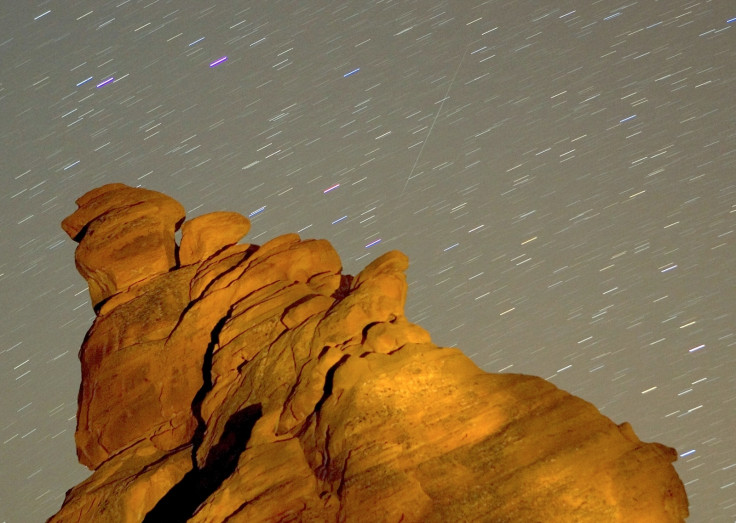Geminid meteor shower 2017: How to watch the magnificent show of shooting stars next week
Geminid meteors will streak across skies on 13-14 December.

Skywatchers across the globe are in for a treat as the annual Geminid meteor shower is set to take place on December 13-14, creating stunning views of shooting stars across the night sky.
Named after the constellation Gemini, Geminids are seen every year in the month of December when the Earth passes through a trail of dusty debris from space object 3200 Phaethon. As this material comes in contact with our atmosphere, it starts burning up, creating the beautiful night show.
This year, the glowing meteor shower will begin on the evening of 13 December and continue until the early morning hours the next day. Skywatchers will get to see around 60 meteors every hour. However, during peak hours after midnight, the number of shooting stars could be as high as 100 or above.
"Geminid activity is broad," said Nasa's Bill Cooke. "Good rates will be seen between 7:30 pm on December 13 and dawn local time the morning of December 14, with the most meteors visible from midnight to 4 am on December 14, when the radiant is highest in the sky." The radiant point of these meteors – from which they appear to burst out – is in constellation Gemini.
The conditions for watching the event are also perfect. According to Nasa, unlike last year, Geminids will appear clearly in the night sky with a "thin, waning crescent Moon". For best viewing, it is advised to look before the moon rises.
How to watch Geminids this year
Geminids will be seen all over the world, but people in the Northern Hemisphere will have the best seats to enjoy the show compared to those in the Southern Hemisphere.
For people in the UK, constellation Gemini will appear in the eastern skies next week and that would be the best direction to look for the shooting stars.
As meteor showers appear best in dark skies, picking a viewing spot with open sky and minimal light pollution would be ideal. Just get to the place of your choice, lie back and wait for the show to start.
And in case the skies are not clear, you can even watch the meteor shower online. Slooh will broadcast the event, using live feeds from multiple observatories, and from sites in the UK, Sweden and Connecticut in the US. The livestream will start at 9pm EST on December 13.
Where is the best place to see a meteor in the UK?
London: The WaterWorks Nature Reserve in east London is a spot less affected by light pollution – a rarity in the capital. You can get there via Clapton and Leyton Midland Rd stations.
Birmingham: Warley Woods is west of the city centre and can be reached via the A456 Hagley Road.
Manchester: Heaton Park is the largest park in Greater Manchester. It is accessible by tram or bus from the city centre, or via the M60 motorway.
Glasgow: The Mugdock Country Park can be reached by bus from the city centre.
Cardiff: The Brecon Beacons Dark Sky Reserve was the first destination in Wales to be granted special protection as an international dark sky reserve.
Belfast: Oxford Island National Nature Reserve hosted events for the BBC Stargazing Live in 2012 and 2013.
Where is the best place to see a meteor in the US?
Pennsylvania: Cherry Springs State Park is a gold-certified International Dark Sky Park and its night sky viewing area is open 24/7.
California: Death Valley National Park is a gold-certified International Dark Sky Park, with very little artificial light within its 3.4 million acres. Angeles National Forest in Los Angeles County, southern California, is also a good spot.
Philadelphia: The Tuckahoe State Park is two hours out of the city.
Arizona: The Kitt Peak National Observatory, near Tucson, is home to the world's largest collection of optical telescopes. The clear, dark skies of the Sonoran Desert are also a firm favourite with astronomers.
Utah: The night sky at Bryce Canyon is so dark it is possible to see 7,500 stars on a moonless night.
Illinois: The Hickory Knolls Discovery Center in St Charles is a nature conservatory and a Dark Sky Park.
New Mexico: Chaco Culture National Historical Park is a great location to try and spot the Delta Aquarids.
Texas: The Big Bend National Park in west Texas has gone to great lengths to retain its International Dark Sky status, including by changing the lighting to shielded LEDs.





















